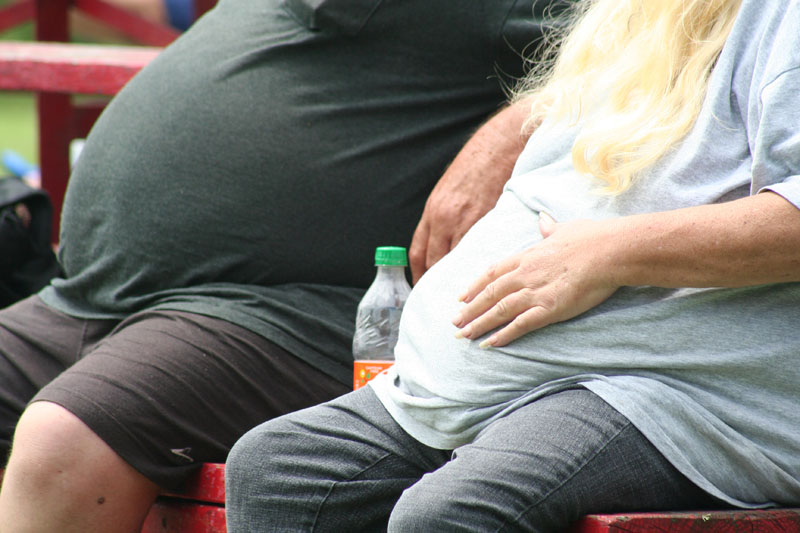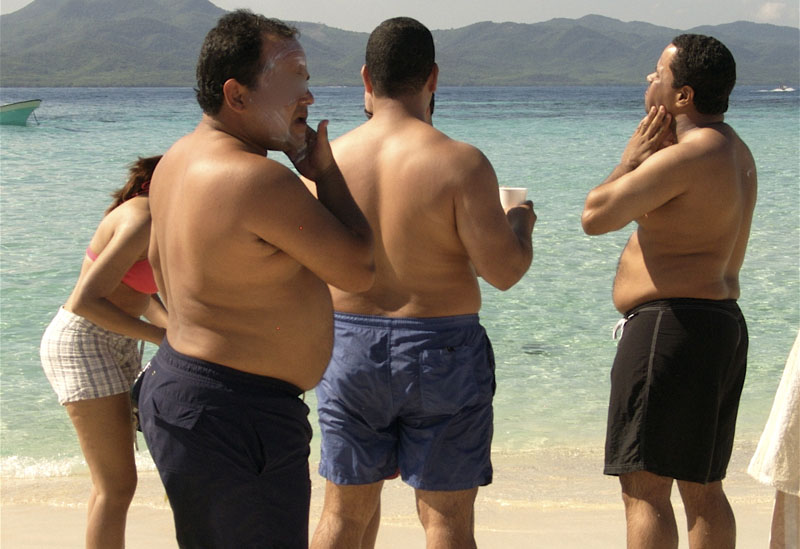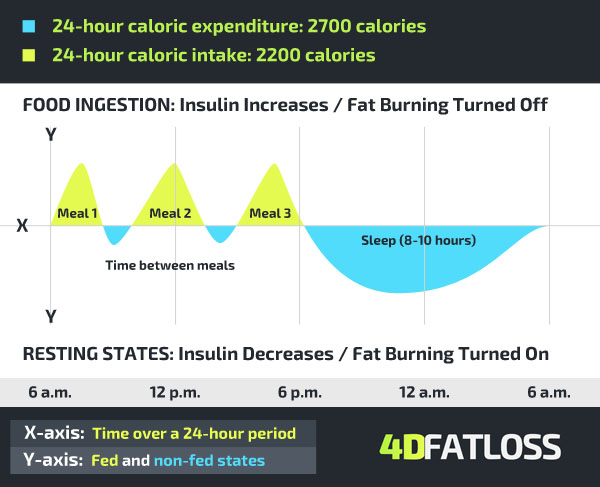
The term ‘how to lose belly fat’ is a hot topic and here’s why: we all store fat on our bellies and it sucks.
But it’s for a good reason. As humans, we evolved over a period of time where there were periods of feasting and periods of fasting. This meant that in order to survive, we had to be really good at storing energy, otherwise we’d die. Fat is stored on our bodies (and bellies) because of an intake that exceeds our output.
That simply means when we take in more energy through food than we are burning, it’s going to be stored for later. Basically, we store fat because it’s an evolutionary advantage for survival.
But how do we get rid of the excess belly fat, in general?
There are a ton of silly ideas with ‘tips’ and ‘tricks’ on how to burn more belly fat, but many of them are pretty counterintuitive when you actually understand how losing fat actually works.
Here’s the shortlist of some of those gems:
- Pound the polyunsaturated fat
- Avoid white grains. For instance, eat brown wheat bread instead of over-processed white bread, and favor wild brown rice over white rice.
- Stretch, then crunch (I seriously can’t make this shit up)
- nix the before-bed snack
- Exercise blind (came from a real publication that rhymes with Jen’s Litness)
- rent motivation (came from a real publication that rhymes with Jen’s Litness)
- pass on the potatoes
- You’re getting older (like this really helps anyone?)
- Cut out all carbohydrates (such a stupid idea)
- Eliminate all fruit from your diet (idiotic absolutism at work)
That entire list above came from the most popular sources online when you give ‘how to lose belly fat’ a Google search. I am not making this stuff up. For those sources, I am not going to post the links as they’re not worth your time.
By the time you’re done reading this article, you’re going to know the following:
- What fat belly fat is
- Why we store fat
- How fat is stored
- The role of fat in your body
- The type of training required to lose body fat all over, which will help you lose belly fat
- The dietary principles responsible for fat loss
- Recommended resources for putting all of this together
What Is Belly Fat?
It’s the body fat you store around your waist and abdomen in two forms: subcutaneous, and visceral fat.
Subcutaneous fat: the jiggly fat you can squeeze with your hands. (lower ab pooch, love handles, etc).
Visceral fat: the fat stored under the muscles that pad the organs in your abdominal area (stomach, intestines, liver, pancreas, etc).
There’s a difference in how these types of fat appear on the body. When there’s a lot of subcutaneous fat present on the belly, and around the body, one will appear soft, squishy, and without muscle definition.
If you’ve ever looked in the mirror and notice your upper body being lean, with more definition in your chest, arms, shoulders and back, but no visible abdominal definition, then you know you’re still holding a good bit of subcutaneous fat.
Now it doesn’t only store on the belly. It can store on our hips, thighs, and buttocks too.
On the contrary, if you’ve ever seen someone (mostly men) with the so-called beer belly, you’ll know this is primarily visceral fat. This is especially common in those guys who tend to be fairly lean all over the rest of their body except for their waist, where it just sticks out.

I’ve seen many guys who look relatively thin from behind, only to see a big ole belly from the side view. The great news is intense weight training and high intensity cardio is the best medicine for burning visceral fat (1).
Why We Store Belly Fat (And Fat, In General)
Body fat (and belly fat) serves a few purposes. It keeps us warm, is an alternative fuel source when carbohydrates are low or scarce, and helps with the storage of certain vitamins (A, D, K, E) (3).
It’s also where Leptin is produced. Leptin is a hormone that helps regulate appetite. When leptin is high, it sends a signal to your brain that gives you the satiated (full) feeling. When it’s low, you tend to be hungrier.
So if you’ve been dieting and have lost a good amount of body fat, chances are you’re producing less leptin than you were in a fatter state. As a result, hunger seems to be harder to deal with, and it’s easy to give into those cravings if you don’t have a plan.
The body wants to survive first and foremost. Aesthetic goals are primarily a vanity thing, more so than an evolutionary/biological thing.
This is why you always hear of people who’ve lost a lot of weight continually deal with hunger issues. No amount of food seems to satisfy them, and in many cases, people will regain much of their lost weight and then some.
So body fat (and subcutaneous belly fat) is primarily protective/essential for life, but too much can be bad for us. A Scientific American write-up states that body fat levels above 25% for men and 30% for women is associated with premature death and an increase of disease (2).
Another correlation with health issues is an increasing waistline, so a remedy for reducing and keeping belly fat (visceral or subcutaneous) in check is in order.
One more issue with excess belly fat and excess fat, in general, is that it makes us heavier. The extra weight is hard on the ankle, knee, and hip joints and can cause postural issues over time.
How We Store Belly Fat
Fat storage is a complicated process in which the body turns the food you eat into fat and stores it on your body.
In short, there are 3 main macronutrients:
- Protein
- Carbohydrates
- Fat
For sake of this article, know this: no macronutrient is inherently bad or good. Everything is within context, and each one serves a purpose in the body.
Protein is broken down into amino acids to be used for repair of the tissues and is hardly ever stored as fat (though it can be, but it’s very rare and not worth worrying about).
Carbohydrates are primarily broken down into glucose and stored in the muscle and liver as glycogen to be used by the body for energy. Sugar is the primary fuel source for the body, and fat is secondary.
Fat is broken down into fatty acids and stored in your fat cells on your body.
here
And for the record, carbs aren’t to blame for making you fat. It’s the excess energy intake from lots of carb and fat heavy foods that are easy to overeat on. For more, read this article: does sugar make you fat?
After you ingest a meal, your body breaks it down through your digestive system into the fatty acid chains and once it gets to your blood, it heads to your fat cells to be stored. Now, this can be a temporary thing as that same fat could be burnt off that day or the following week, but the fat you eat is the fat that’s stored on your body(4).
So in general, the fat that’s on your belly is indeed the fat you ate. It’s not the protein or the sugar. Now those macronutrients can have an impact on how the fat is stored, but the likelihood of them being converted into actual fatty acids is rare. You’d have to eat an incredible amount of carbs (over 500-800 grams per day multiple days) to be turned into body fat through gluconeogenesis.
The Role Of Fat On Your Body
Body fat primarily serves 3 purposes: energy reserves, vitamin absorption, insulation/protection.
We’ve already covered the excess energy purpose, but fat-soluble vitamins like D, K, E, and A need to be consumed with fat in a meal to allow the body to use them properly. This is why very low fat diets can leave you nutrient-deficient. These vitamins can also be stored for later use in your fat tissues, which is definitely a good thing in the case you go for a while without the intake of these vitamins.
Body fat insulates and protects the body, especially in the colder months. It helps keep your body warm and helps you maintain a higher core temperature. If you’ve ever been super lean, you’ll probably recall how cold intolerant you may have been.
Body fat also produces various hormones in the body that regulate appetite and other endocrine functions. The hormone leptin, which is involved in hunger and generally lower when you begin to lose body fat is the main hormone most people talk about when it comes to fat loss… I’ve discussed leptin more in 4D Fat Loss, LGN365, and HOTBOD and how to manipulate it with a higher carb intake ala refeeds.
Now let’s get into the nitty-gritty of all this…
How do you train and eat better to lose belly fat and keep it off?
High Intensity Resistance Training
Resistance training, pure and simple, is the best way to help rid yourself of belly fat. High intensity weight training helps you build muscle, increase your metabolism (slightly), and helps you hang onto muscle tissue as you eat less to burn off the body fat.
You can train using full body, body part splits, upper/lower splits… It doesn’t matter as long as you’re training with intensity and doing it frequently enough.
Remember, weight training is better than traditional cardio from the perspective of getting the best return on your time invested. Traditional cardio, like running, cycling, rowing, or doing the Stairmaster will help you burn calories, but they do very little for helping you increase your muscle mass.
Cardio is helpful, but if you’re serious about losing belly fat and keeping it off in an efficient and effective manner, resistance training is your best form of exercise.
Here are some helpful resources:
- Workout Plans (which program is the best for you?)
- Weight Training For Women
- The Muscle Build Guide For Women
- The JCDFitness Beginners Muscle Building Routine
- Spot Reduction Doesn’t Exist
What’s the best exercise to lose weight? That’s a common question and here’s the truth — there are no exercises that make you lose fat. It’s all about what you put into your mouth (ahem).
Adopt A Dietary Strategy That Encourages Fat Loss
There are 3 principles that matter most when it comes to ensuring you lose body fat from a dietary perspective.
Those are:
- Creating a caloric deficit (see: How To Create A Caloric Deficit To Lose Weight
- Eating enough protein to spare muscle tissue (see: How Much Protein Do You Need?)
- Getting enough carbs and fats for healthy function (see: Don’t Fall For The Low Carb Trap)
Eating for fat loss doesn’t have to be complicated but you will fail if you don’t have a plan.
How To Lose Belly Fat And Keep It Off In 7 Effective Steps
Losing belly fat is a process. And that process goes as follows:
1. Train With Weights At Least 3 Times Per Week
Weight training is superior to cardio alone. You can use any of my programs: Beginners routine, LGN365, HOTBOD (for women), 4D Fat Loss.
There are multiple program ideas here.
2. Eat Enough Protein (if you’re not eating much now)
1 gram per pound of body weight is sufficient for most people… Focus on getting plenty of whole food sources over protein powder and shakes. If you’re more than 30 pounds overweight, multiplying your body weight by .8 will be plenty of protein to maintain your muscle mass.
3. Replace Junk Food With Whole Food Carb And Fat Sources
Sugary drinks, cakes, candies, fast food, and other junk, packs a ton of calories. It’s super easy to overeat on these foods when compared to whole foods rich in fiber, water, and micronutrients. It’s not the sugar that makes you fat, but the very energy-dense food which is created by combining lots of simple sugar and fat. More: Is sugar bad for you and does it make you fat?
If it’s not the sugar that makes you fat, what about the insulin spikes?
Insulin is not the devil. Insulin is needed in order to transport nutrients from our food into our cells. If our insulin does not increase after meals, we die.
Fat loss happens from a caloric deficit – nothing else. Obviously, your macronutrient ratio matters if you want optimal fat loss with maximum muscle retention, but losing weight only happens when you eat less than you burn.
So even if you ate mostly carbohydrates and spiked your insulin all day long, you’d still lose fat because of the net daily deficit.
Case in point: if you burn 2700 calories per day and you eat 2200 calories, you’ll still burn fat because of the energy deficit.
As you’ll see in the image above, taken from my 4D Fat Loss Course, you’re still burning fat regardless of the spikes in insulin.
4. Moderate Your Alcohol Intake
Alcohol can increase the likelihood of storing body fat, especially when you drink it with a high fat meal… read my guidelines (alcohol and weight loss) on alcohol to make better choices.
5. Get At Least 7-8 Hours Of Sleep Per Night
It’s been shown in various studies that people who slept less have a higher risk for obesity and those who slept more were better able to maintain their weight.
6. Build Momentum (see this video)
7. Get Support And Accountability
You can do this through joining a gym class, working with a trainer, getting coaching, or Joining My Facebook Group (highly recommended).
—
SOURCES:
1 – https://www.ncbi.nlm.nih.gov/pubmed/23714599
2, 3, – http://www.scientificamerican.com/article/why-does-fat-deposit-on-t/
4, – http://www.ncbi.nlm.nih.gov/pubmed/4072956

